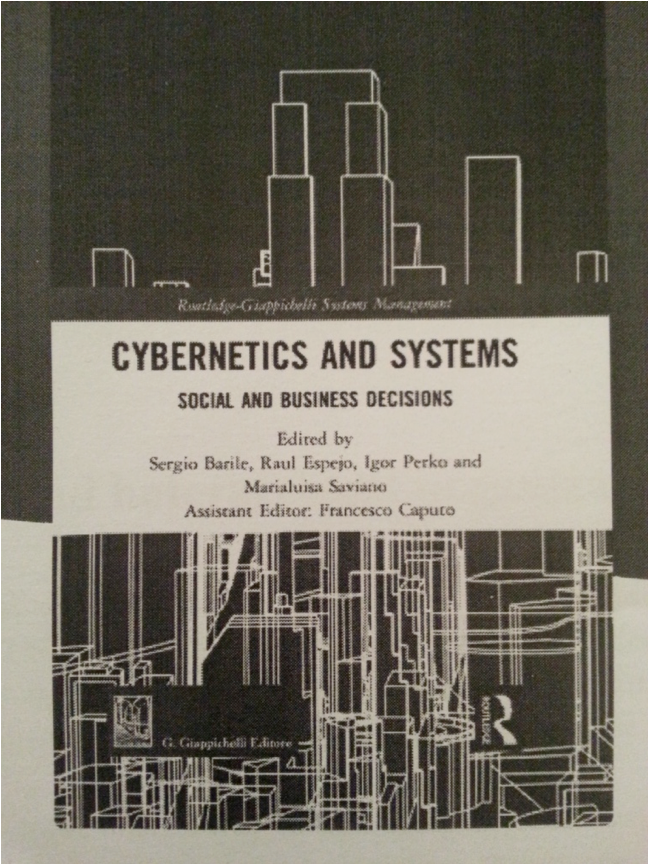1. Hierarchical and Heterarchical Organizations
Life allows hierarchical and heterarchical commands. If we consider the Midway battle in the Pacific Ocean, during the Second world war, we are told that in June 1942 the US Navy had her command ship bombarded. At that point ships started responding not to a central command but to what was happening in real time: the control got mobile and passed to the ship which were nearer to the battle field. The direction passed from a hierarchical and top down modality, organized by forehand communication, to a horizontal one, based on constant feedbacks and on the moves of the enemies. This allowed to win the battle.
The push towards a more shared way of managing organizational systems is more and more felt as important and I personally consider the Learning Organization (L.O.) the metaphor that most underlines the co-construction of a cybernetic brain, the chance to build a second order non directive way of leading. It is a horizontal organization which allows to enhance the dialogue among participants and to learn from each other. As managers or called in consultants in an Organization/Institution we help a L. O. emerge each time we: (1) organize and explicitly connect the beliefs and the presuppositions of all the people who are dancing together; (2) are able to organize a communal praxis; (3) tune in on relationships and processes; (4) enhance the levels of awareness and of reflection on the common construction of a shared processual and evolutive ‘reality’; so that (5) everything each person learns and understands will become a shared contribution to the wellness of all.
To decide if an Organization works horizontally or vertically is not a decision an outside observer can take arbitrarily. The observer will be only able to describe what she sees, aware that she will not be able to access to one only truth. Systems theory teaches us that every organization is a non-trivial system, dependent on its history and not determinable analytically. The type of structure an organization has is decided by leaders of that specific system: if he defines itself part or apart from the organization. The epistemological choice defines the type of manager a person will be and the type of organizational world that will emerge from his arbitrary choices and from the mandate a manager has received.
It is different if one thinks to be apart from the team, in a power position, in a world organized by a priori rules which one needs to implement and pass to the workers, who are considered under one’s management or instead one feels and considers oneself as part of a team, with whom it is possible to share decisions and negotiate world views. We are lately asked as psychologist to enter Organizations and consult, in order to perturb vertical structures towards non directive strategies of organization and culture. We therefore set up consultations to try and perturb the usual mode of working, hoping to open up to more horizontal and participative relationships. Senge (1999) suggests the term “metanoia” (from Greek μετανοεῖν, metanoein, changing one’s thoughts), as the process of intellectual/ moral/ spiritual conversion through shared intuitions and choices that goes towards evolution. To become able to do things together that one did not even think possible.
In order to perturb an Institution and build a L.O., in order to try and work in an horizontal mode, I believe that some assumptions must be respected: think systemically and honor complexity; take into consideration the premises that guide the actions of all participants; participate dynamically to the process, co-constructing shared visions and plans despite different positioning; activate motivation, and allow emotions to stem. All this is done by accessing to a reflexive thinking, which means allowing second order practices to emerge: creating inquiries in a recursive loop, taking the design turn and accepting our deep ignorance (von Foerster 1990).
2. An example
I was called as a consultant in a Public Hospital in Sardinia, Italy, to work specifically with three wards in which the chief physicians felt they couldn’t delegate to anybody and had all the responsibilities and decisions on their shoulders. The quest was to alleviate this distress and to think together on the organizational procedures. I did a long analysis of the quest (Telfener 2011) with the three chief doctors and made my proposal: 1. to pass from a vertical to a horizontal organization, 2. to try and make a L.O. emerge from the common encounters and from the conversational work we were going to do together over time. I therefore organized a systemic inquiry (Ison 2010) as a context of ethically related processes which emerged from common actions.
In order not to shut down the wards the people who worked there were divided into two groups and would come to one of the two groups, one in the morning and one in the afternoon (four hours each). The participants could choose according to the convenience of the ward, since we had a clear common objective and a very clear mandate, which we all shared.
We needed to consider such meetings as a challenge and an opportunity, I therefore explained to the whole group my premises, intentions and aims and got a shared plan to build reciprocal respect and presence, as the first steps in our work. I organized the common work to activate the dialogue and the reciprocal trust and acquaintance. We scheduled organizational meeting and other reunions on specific relational shared issues; we read together the rules and regulations from the State department of Health and discussed of their consequences. We spoke about the culture of the ward and the one of patients and other stakeholders. We explicated expectations, chores and mandates and organized common exercises and common challenges. We worked together in a three days program repeated three times apart from one another, with Skype contacts in between, homework and specific chores for all the workers, despite their role in the ward.
3. How does a Learning Organization work
How did I try and produce a change in this Organization? (1) Reflecting on the premises which were present in the morphic field that we all shared (Sheldrake 1995), (2) making them explicit to all, through active role playing and common conversations, (3) enhancing in this way the coherence of the system and their gains from the work done till this moment; (4) never undermining the individual and collective resources in the field and (5) organizing a common future planning, through clear procedures and objectives. To do this we took some time, certainly not all the time needed: the participants had three encounters with me on a monthly basis and met among themselves once a week for two hours to discuss what was going on and what they expected and wished for. The Skype meetings with me allowed them to tell me what were their difficulties and their moments of distress.
In order to enhance this process each participant had to take responsibility of its own knowing and being and we all felt the need to create a non judgmental setting, where people were asked to explore and define themselves, the work procedures and their common relationships.
As the implementer, I realized how much I needed to put myself in the picture and be transparent about the process that was emerging from our common dance. We worked a lot on future dynamics and possible problems, not because we knew already what would happen but because we were eager to explore our common point of view and share possible strategies to overcome difficulties. We imagined the evolution of this ward toward a more participative, dialogical practice through many devices: theater, role-playing, dramatization, active exercises and much else. We were ready to have clear objectives that indicated a possible evolution. This did not mean to know which the future would be but rather enhance a commitment, an intention, a project.
4. Conclusions
Every organization is a human community created together that becomes organized by itself, by laws and processes that are no longer under the domain of single individuals. Wholes and parts are interrelated and when trust organizes the flux of actions and practices the organization will adapt to a generative process which will be coherent with the individuals that live within it.
There are two possible learning strategies, one we could call reactive and the other generative. If all learning integrates thinking and doing, the first learning is organized by a priori models and retraces established and shared habits. Generative learning introduces novelty, detaches from the past and builds a growing awareness of the processes to which one participates by learning. This type of knowledge is very interesting since it introduces novelty and offers the possibility to go beyond what has been already said and done. It is a process which needs learning and is possible in an organization where participants share conversations and have reciprocal trust. These objectives are more easily reached in a system organized as a Learning Organization, where people interact and exchange capacities and emotions, narratives and actions. Because a L.O offer the opportunity to transcend the dichotomy between individual and collective.
Key words: Learning Organization; hierarchical and heterarchical Organizations; second order practices; honor complexity; generative change.
References
Ison R..(2010). Systems Practice: How to Act in a Climate-Change World. England, London: Springer.
Senge P.. (1999). The Dance of Change. New York: Doubleday/Currency
Sheldrake R..(1995). Seven Experiments that Could Change the World. Rochester, VT: Park Street Press.
Telfener U..(2011). Apprendere i contesti. Milano: Cortina Editore.
Von Foerster H..(1990). Ethics and second order cyberneticfs. International Conference Systems & Family Therapy, Paris 4-6 october.




